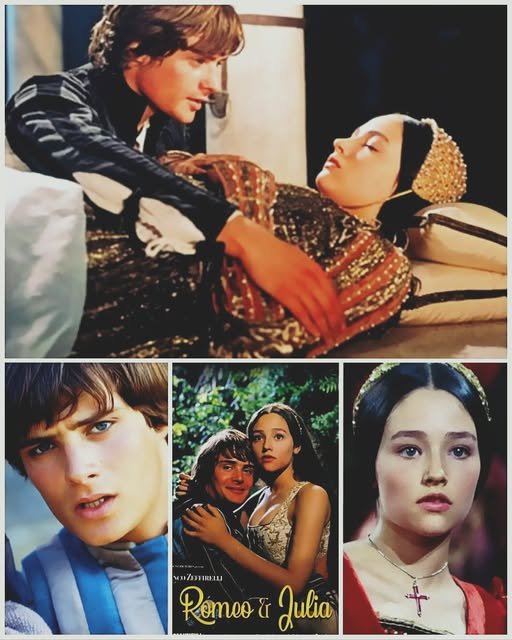Romeo and Juliet (1968): Franco Zeffirelli’s Timeless Shakespearean Adaptation
Franco Zeffirelli’s 1968 masterpiece, Romeo and Juliet, is celebrated as one of the most iconic adaptations of Shakespeare’s beloved tragedy. Featuring the unforgettable chemistry between Leonard Whiting and Olivia Hussey, the film brought a fresh perspective to the timeless tale of star-crossed lovers. With Whiting at just 17 and Hussey at only 15, their youthful innocence and raw emotion added depth and authenticity to this enduring classic.
A Bold Casting Decision That Made History
Director Franco Zeffirelli took a significant creative risk by casting unknown actors for the lead roles, prioritizing age-accurate performers to bring a sense of realism to the characters. Leonard Whiting’s boyish charm and soulful expressions perfectly embodied Romeo’s romantic devotion, while Olivia Hussey’s radiant beauty and natural grace brought Juliet’s vulnerability and strength to life.
The connection between Whiting and Hussey was palpable from the start, and Zeffirelli fostered their bond to ensure an emotionally authentic portrayal of young love. This unique decision elevated the film to unparalleled heights, setting it apart from other adaptations.
The Iconic Balcony Scene
One of the most memorable moments in Romeo and Juliet is the balcony scene—a cinematic triumph that remains etched in audiences’ hearts. Zeffirelli’s direction emphasized emotional truth, allowing Whiting and Hussey to showcase the raw passion and tenderness of Shakespeare’s characters. Hussey’s portrayal of Juliet exuded innocence and longing, while Whiting’s Romeo conveyed deep devotion and earnestness, making the scene a timeless testament to love.
Stunning Visuals and On-Location Filming
Zeffirelli’s commitment to authenticity extended beyond casting, as the film was shot on location in Tuscany and Umbria. The lush Renaissance-era landscapes added unparalleled depth and visual beauty, immersing viewers in Shakespeare’s world. Cinematographer Pasqualino De Santis captured every detail with precision, earning the film an Academy Award for Best Cinematography.
Challenges Behind the Scenes
Despite the film’s artistic brilliance, its production wasn’t without challenges. The bedroom scene, featuring partial nudity, caused discomfort for the young actors. Zeffirelli defended its inclusion as an artistic necessity, and both Whiting and Hussey approached the scene with professionalism. The result was a tasteful, integral moment that added emotional weight to the story.
Critical Acclaim and Awards
Upon its release, Romeo and Juliet became a global phenomenon, praised for its innovative direction and heartfelt performances. The film earned four Academy Award nominations, winning Best Cinematography and Best Costume Design. Whiting and Hussey were lauded as breakthrough stars, and their portrayals remain definitive interpretations of Romeo and Juliet.
The Legacy of Leonard Whiting and Olivia Hussey
The success of Romeo and Juliet profoundly impacted its young stars. Leonard Whiting chose a quieter life after his breakout role, while Olivia Hussey continued to shine in film and television, with her portrayal of Juliet becoming a defining moment in her career. Both actors have expressed admiration for Zeffirelli’s vision, which allowed them to embody Shakespeare’s characters with sincerity and depth.
Why Romeo and Juliet (1968) Endures
The true heart of Romeo and Juliet lies in the undeniable connection between Whiting and Hussey. Their performances went beyond mere acting—they captured the innocence, passion, and tragedy that Shakespeare envisioned. Franco Zeffirelli’s adaptation continues to resonate with audiences worldwide, cementing its status as one of the greatest Shakespearean films of all time.
